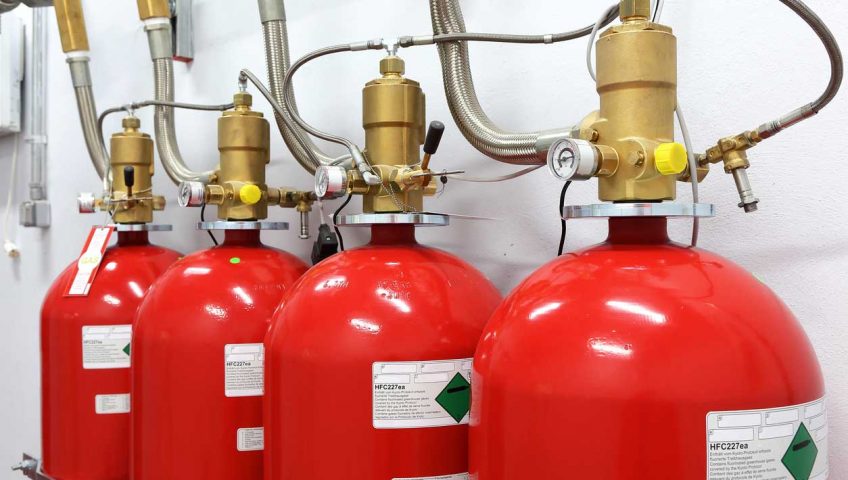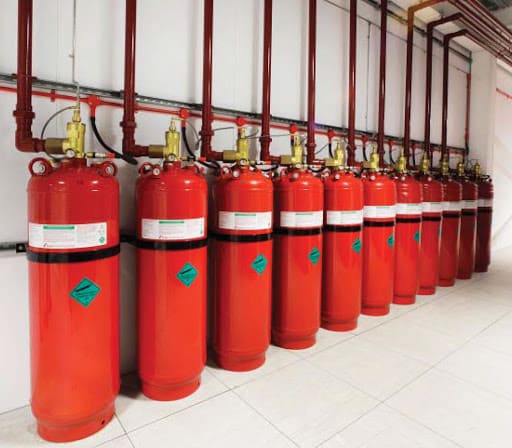

CLEAN AGENT SUPPRESSION SYSTEM
A clean agent is a fire extinguishing substance that is non-conductive, evaporates without a trace, and is used in fire suppression systems. When a fire is detected, the system releases an inert gas or chemical stored in a container. Clean agent systems are effective in stopping Class A, B, and C fires early, before they spread.
When activated, a clean agent is released as a gas to extinguish the fire. Clean agents are stored as gas or liquid and work by removing or blocking one of the three things a fire needs: heat, oxygen, or fuel. Clean agent systems are commonly used in labs, medical facilities, areas with vital infrastructure, and spaces storing flammable liquids.

Types of Clean Agent
The most common clean agent systems use inert gases like nitrogen, argon, and carbon dioxide, or chemicals like FM-200 and Novec 1230. When activated, the agent is released to put out the fire by removing heat, oxygen, or fuel. These systems are fast, often extinguishing fires in under 10 seconds, preventing major damage. Clean agents evaporate quickly, so there’s no cleanup required. Novec 1230 and FM-200 are more affordable than other gaseous systems because they use less agent and need fewer storage cylinders, though Novec 1230 is slightly more expensive than FM-200.
AITO has a team of qualified engineers who possess the technical expertise and capabilities required for the role.


